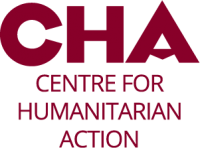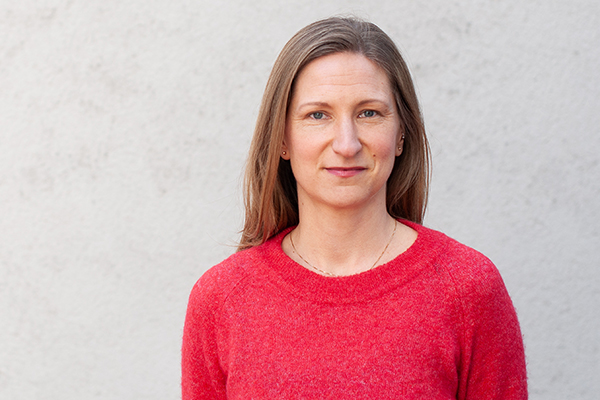| Author: | Iida-Maria Tammi |
| Date: | 8. April 2024 |
Scroll down to find an audio version of the blog!
The Green Climate Fund, the global Adaptation Fund, the Least Developed Countries Fund… It seems that climate finance is everywhere and all that anybody can talk about. Its pervasive effect is felt also in the humanitarian sector. Over the past years, aid organisations have been presented with various new funding opportunities, including the Global Climate Resilience Platform, the Forecast-based Financing mechanism, and more controversially, the new Loss and Damage Fund.
While increasing number of donor governments are earmarking funds for climate-related activities, significant challenges remain in terms of both volume and allocation of resources. A recent study finds that the thirty most climate-vulnerable countries received on average less than one US dollar per capita of climate adaptation funding. In contrast, the amount of funding allocated for less vulnerable countries was over ten US dollars per capita, with most of the funding going to countries with the lowest vulnerability score. Evidence such as this leads the authors to conclude that while there are good intentions and potential for development, the current state of climate finance remains “far from achieving its vision.”
In this blog post, I discuss the opportunities and challenges that climate funding presents for humanitarian organisations. I begin by examining the underlying logic of humanitarian climate action and the associated shift from reactive to preventive aid provision. After that, I highlight the potential conflict between climate and non-climate-related humanitarian needs and flag a gap in knowledge regarding the broader ethical ramifications of the ongoing policy shift. I conclude by presenting a new Centre for Humanitarian Action (CHA) research project that seeks to analyse these issues and offer policy advise on climate-related humanitarian questions.
The logic and promise of early humanitarian action
It is often said that “the climate crisis is a humanitarian crisis”. What this means, is that the negative effects of climate change are most sorely felt by vulnerable communities in the Global South. The UN Office for Disaster Risk Reduction (UNDRR) calculates that there have been nearly three times as many climate-related disasters during the past decade as there were in the 1980s. These disaster events are linked with a whole spectrum of harmful phenomena, from increased vulnerability to human rights abuses to disrupted livelihoods, displacement, and spread of infectious diseases.
In the humanitarian context, climate change is expected to cause a significant rise in the number of people needing assistance and protection. It is estimated that humanitarian needs could increase from the current 108 million people in need of assistance to as many as 150 million people by 2030, and 200 million by 2050. The cost of aid provision is likewise projected to increase by something between 70 and 470 per cent, depending on the way in which present funding levels are calculated.
It is clear, then, that the humanitarian system is facing a gargantuan task with no easy solutions in sight. At stake are not only the lives of aid beneficiaries but the viability of the system itself. As CHA Research Fellow Andrea Steinke writes, there is an urgent need to reconsider the way in which aid operations are organised and run, as well as the norms and principles that underpin those operations. If this doesn’t happen, Steinke maintains, “the humanitarian system will be overworking its way into exhaustion and oblivion.”
Currently, prevention and early action appear to be among the favourite solutions for bracing the humanitarian system against the effects of climate change. By changing the humanitarian modus operandi from reactive to preventive, humanitarian practitioners are endeavouring to quell the seemingly uncontrollable rise in needs. The logic of prevention informs also donor priorities, with an increasing share of funds being earmarked for purposes like Disaster Risk Management (DRM) and Anticipatory Action (AA).
In a document entitled “Humanitarian Aid Donors’ Declaration on Climate and Environment”, the European Union and 24 individual EU countries recognise the pressures (both financial and operational) that climate change puts on the humanitarian system. In this context, the signatories commit to measures like encouraging “greater investment in work to prevent, prepare for, anticipate and respond to disasters”, and strengthening “the implementation of appropriate responses in terms of disaster risk reduction, climate change adaptation and longer-term development.”
This example illustrates how the increased availability of climate-related humanitarian funding is linked to an expansion of the established limits of aid provision. Humanitarian action is no longer strictly short-term, post-disaster relief, as connections with adjacent policy sectors are being established, reinforced, and reworked. Relevant areas of cooperation include environmental protection, climate mitigation and adaptation, and development cooperation.
While such reworking of the humanitarian mandate is an opportunity for aid organisations to revamp their operations and adapt to the changing climactic conditions, it also raises various operational and ethical questions. In the next section, I examine more closely the implications that shifting donor priorities may have for the beneficiaries of emergency operations.
How to allocate scarce resources in a climate-changed world?
One of the perennial dilemmas of humanitarian action pertains to the equitable and just allocation of limited resources. On everyday operational level, this pertains largely to the way in which food, medicine, and other goods are distributed among humanitarian beneficiaries. Decision-making is guided by the principles of humanity (addressing human suffering wherever it is found) and impartiality (providing assistance based on need), albeit they can be difficult to uphold in volatile field contexts.
On executive and donor level, motives for the distribution of financial and other resources tend to be more obscure. Humanitarian needs are often weighed against questions of access and feasibility, a deliberative decision-making process that the researcher Alex de Waal terms ‘policy triage’. Noting that there are always some crises that elicit a greater response than other, de Waal writes: “We like to believe that the main criterion for a relief response is gravity of need. But that is always a subjective estimate, […] modulated by other considerations such as danger, difficulty and expense.”
While there is still too little research on climate funding to say anything definitive about its effects on the allocation of humanitarian resources, there are some analytical grounds for caution. Many social and political science scholars have drawn attention to what might be called the ‘dark underbelly’ of climate emergency politics.
One such commentator is Professor Mike Hulme, who has problematised the way in which an overriding focus on any single issue will inevitably reduce the attention and resources available for other policy concerns. “With climate change,” Hulme writes, “claiming that ‘there are only n more years to act’ might elicit a greater focus of mind among citizens and policymakers to engage more deeply with the issue at hand. But it also leads to the putting aside of other concerns that are not conditioned on the same claims of urgency.” This is to say that the pull of emergency politics is so strong that it risks “squeezing out” or forcing other issues “to be reframed and subsumed within the politics of climate change”.
Applied to the humanitarian context, Hulme’s observation regarding the marginalising effect of climate emergency politics evokes many interesting questions. How is it, for example, that finite resources are divided (both now and in the future) between climate- and non-climate-related humanitarian needs? On what grounds, and by whom, are such calculations made? With so much political capital being vested in tackling the adverse effects of climate change, how can aid organisations ensure that sufficient funds continue to be made available for victims of other ongoing emergencies?
In practice, it is difficult to predict the exact way in which humanitarian resources will be allocated. Climate change will not only cause new humanitarian disasters to develop, but it will also accentuate the needs in existing (protracted and other) emergencies. Moreover, it is worth bearing in mind that donors tend to allocate funds to contexts that provide some sort of added political or strategic benefit. For the time being, the public imagination is captured largely by the ongoing conflicts in Ukraine and Palestine.
As of now, there is little to no research available to help organisations navigate these changes. There is still much that political, social, and natural scientists can contribute to the debate. The first two have a key role to play in the revision of existing policies and modes of humanitarian governance, while climate models and attribution science can help clarify the relationship between climate change and the development of emergencies.
A new CHA research project on Humanitarian Climate Politics
In January 2024, CHA launched a new research initiative dedicated to exploring the concrete (programmatic and operational) implications of the changing humanitarian policy landscape. One of the project’s key areas of interest pertains to the potential conflict between climate- and non-climate-related humanitarian needs. It seeks to answer the question whether and how the increasing focus on climate-related disasters impacts aid providers’ ability to cater for the needs of victims of other ongoing emergencies, and what implications does this have for humanitarian policy, research, and operations?
The purpose of the Humanitarian Climate Politics project is to support aid organisations in adapting to the changing operational circumstances, while simultaneously safeguarding the rights and wellbeing of current humanitarian beneficiaries. The project’s research strategy privileges the perspectives of humanitarian practitioners (rather than those of donors or political decision makers) and offers insight into the needs of potentially overlooked groups (such as victims of non-climate-related emergencies). Ultimately, the aim is to address the analytical blind spots discussed in this blogpost and in doing so, support the development of more equitable and just humanitarian climate policies.
The Humanitarian Climate Politics project takes place during 1/2024-12/2025, and is led by CHA Visiting Fellow Iida-Maria Tammi. The project is funded by the Alfred Kordelin Foundation. For further information on the project and related activities, please contact iida.tammi@fellow.chaberlin.org.
Iida-Maria Tammi is a Visiting Fellow at the Centre for Humanitarian Action (CHA) and the Primary Investigator in the Humanitarian Climate Politics research project.
Listen to the Blog (created with Murf AI):



Related posts
Loss and damage – a humanitarian kairos moment
03.10.2023Climate Change and Humanitarian Change
23.11.2023Climate Change and Humanitarian Change